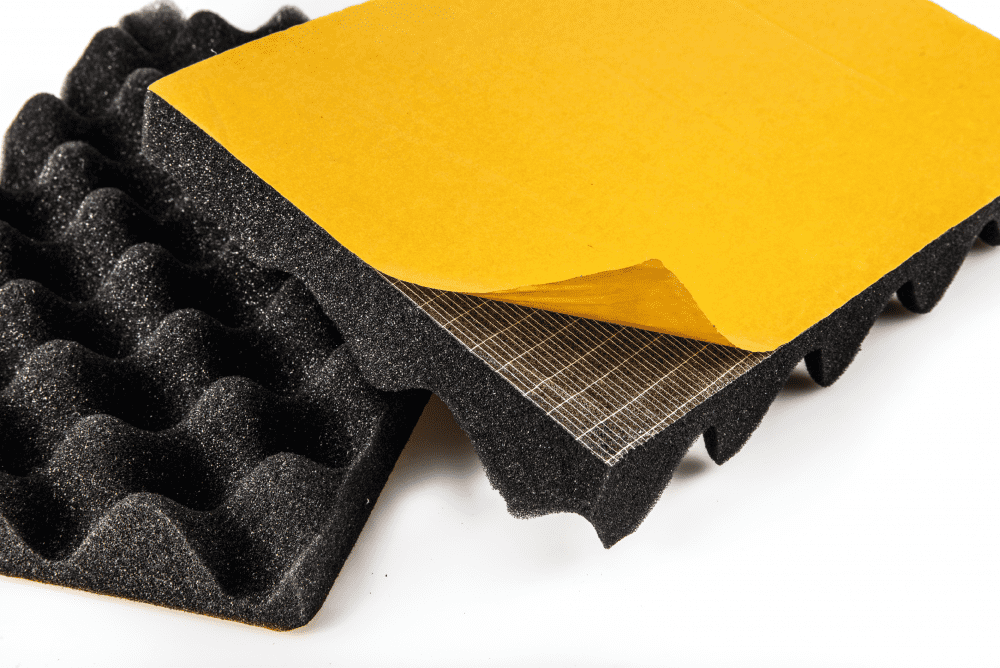If you’re looking for a soundproofing solution that can help reduce noise levels in your home or office, acoustic foam melamine foam might be the ideal choice. In this article, we’ll discuss what acoustic foam melamine foam is, why it’s such an effective soundproofing solution, and some of the pros and cons associated with it. So, read on to learn more about Acoustic Foam melamine foam and find out if this soundproofing solution is right for you!
Introduction to Acoustic Foam Melamine Foam
Acoustic foam melamine foam is a type of soundproofing material that is made from melamine resin. This type of foam is typically used in acoustic applications, such as recording studios and sound booths. Acoustic foam melamine foam can be used to deaden sound by absorbing noise. It can also be used to reduce echoing and reverberation.
Benefits of Acoustic Foam Melamine Foam
Acoustic foam melamine foam is a type of soundproofing material that has many benefits. It is effective at absorbing noise and reducing echo, making it ideal for use in recording studios, home theaters, and other environments where sound quality is important. Acoustic foam melamine foam is also fire-resistant and durable, making it a safe and reliable choice for homes and businesses.
How Does It Work?
Acoustic foam Melamine Foam is a soundproofing material that is made up of a closed-cell structure. This means that the cells are not interconnected, which makes it an effective barrier against sound waves. The material is also moisture-resistant and flame-retardant, making it a safe choice for use in homes and businesses.
Installation Tips
If you’re looking for an effective soundproofing solution, acoustic foam is a great option. Acoustic foam is made of melamine foam, which is a type of synthetic rubber that’s known for its sound-absorbing properties.
When installing acoustic foam, there are a few things to keep in mind. First, make sure that the area you’re installing it in is clean and dry. If the area is damp or wet, the adhesive won’t adhere properly and the foam won’t be as effective.
Next, cut the acoustic foam to fit the space you’re working with. It’s important to get a snug fit so that there aren’t any gaps where sound can escape. Once you have the foam cut to size, apply an adhesive to the back and press it into place.
Finally, allow the adhesive to dry completely before using the space. This will ensure that the acoustic foam is firmly in place and ready to do its job.
Different Types and Applications
There are two main types of acoustic foam: melamine and polyurethane. They are both effective at absorbing sound, but they have different applications.
Melamine foam is often used in recording studios and other places where sound quality is paramount. It is also used in acoustically sensitive areas, such as hospitals and schools. Polyurethane foam is more commonly used in industrial settings, such as factories and warehouses. It is also used in construction to insulate against noise.
Both types of acoustic foam are available in a variety of shapes and sizes. The most common shape is the wedge, which is designed to fit into corners. Acoustic foam can also be purchased in sheets or panels that can be cut to size.
Acoustic foam is typically installed on walls, ceilings, or floors. It can be glued or taped into place, or it can be held in place with special clips or fasteners.
Pros and Cons
Acoustic foam, also known as Melamine foam, is a type of soundproofing material that is made from melamine resin. This material is often used in recording studios and other places where noise control is important. Acoustic foam works by absorbing sound waves and preventing them from reflecting off of surfaces. It can be used to line walls, ceilings, or floors in order to reduce the amount of noise that is present in a room.
There are both pros and cons to using acoustic foam as a soundproofing solution. Some of the advantages include the fact that it is relatively inexpensive and easy to install. Additionally, acoustic foam does not require any power source in order to function properly. However, there are also some drawbacks associated with this material. For example, it can be flammable and should not be used near heat sources. Additionally, acoustic foam can deteriorate over time if it is exposed to sunlight or other UV rays.
Conclusion
Acoustic Foam Melamine Foam is a great soundproofing solution for anyone looking to reduce noise levels in their home or workplace. Not only is it lightweight and easy to install, but it also offers superior sound absorption capabilities and can be custom-shaped to fit any space. Additionally, acoustic foam melamine foam comes in a variety of colors and textures so you can find the perfect look for your room. So if you’re looking for an effective way to reduce noise levels without sacrificing style, consider acoustic foam melamine foam as a viable option.



































